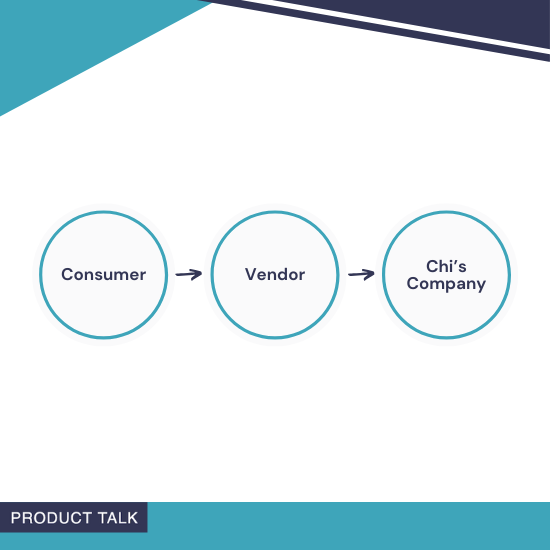The Benefits of Multiline Engineering for Modern Industries
The Benefits of Multiline Engineering for Modern Industries
Introduction
Multiline engineering is a cutting-edge approach that integrates multiple engineering disciplines to optimize complex systems. By combining expertise from various fields—such as mechanical, electrical, civil, and software engineering—multiline engineering enhances efficiency, reduces costs, and improves project outcomes. This method is particularly valuable in industries like manufacturing, construction, automotive, and aerospace, where seamless integration of different technologies is crucial.
Partnering with a reputable engineering companies in lahore offers numerous advantages for businesses and industries looking to execute complex projects with precision, safety, and efficiency. One of the biggest benefits is access to expert knowledge and experience.
In this article, we explore the key benefits of multiline engineering, demonstrating why it is becoming an essential strategy for businesses looking to stay competitive in a rapidly evolving technological landscape.
1. Enhanced System Integration
One of the most significant advantages of multiline engineering is its ability to improve system integration. Traditional engineering approaches often treat different components as separate entities, leading to compatibility issues and inefficiencies.
Multiline engineering, however, ensures that all subsystems—whether mechanical, electrical, or digital—work in harmony. This holistic approach minimizes errors, reduces downtime, and enhances overall performance. For example, in smart manufacturing, multiline engineering allows machines, sensors, and software to communicate seamlessly, optimizing production lines for maximum output.
2. Cost Efficiency and Reduced Waste
By streamlining processes and improving coordination between engineering teams, multiline engineering helps businesses cut costs significantly. Early detection of design flaws, better resource allocation, and optimized workflows prevent costly rework and material waste.
In construction projects, for instance, multiline engineering enables architects, structural engineers, and electrical planners to collaborate from the outset. This reduces clashes between different systems (like plumbing and electrical wiring) and avoids expensive last-minute modifications.
ATTENTION : multi line engineering specialize in designing, constructing, and maintaining complex infrastructure systems involving multiple interconnected networks. These firms play a crucial role in industries such as oil and gas, power distribution, telecommunications, and By integrating these technologies early in the design phase, businesses can create innovative solutions that align with Industry standards.
3. Faster Project Completion
Time is a critical factor in any engineering project. Multiline engineering accelerates project timelines by facilitating real-time collaboration between specialists. With integrated design tools and shared data platforms, teams can work simultaneously on different aspects of a project without delays.
Automotive companies, for example, use multiline engineering to develop vehicles faster by synchronizing mechanical design, electronics, and software development. This concurrent engineering approach shortens the product development cycle, allowing companies to bring innovations to market more quickly.
4. Improved Innovation and Problem-Solving
When experts from different engineering fields collaborate, they bring diverse perspectives that drive innovation. Multiline engineering fosters creative problem-solving by encouraging cross-disciplinary brainstorming.
In the aerospace industry, for instance, combining aerodynamics, materials science, and avionics leads to lighter, more fuel-efficient aircraft. Similarly, in renewable energy projects, multiline engineering helps integrate solar, wind, and energy storage systems for optimal performance.
5. Greater Flexibility and Scalability
Businesses today need adaptable solutions that can evolve with technological advancements. Multiline engineering provides the flexibility to upgrade systems without complete overhauls. Modular designs and interoperable components make it easier to scale operations or integrate new technologies.
For example, smart cities use multiline engineering to design infrastructure that can incorporate future IoT advancements. This scalability ensures long-term sustainability and reduces the need for costly redesigns.
6. Enhanced Safety and Risk Management
Safety is a top priority in engineering projects. Multiline engineering improves risk assessment by considering all potential interactions between different systems early in the design phase. This proactive approach identifies hazards before they become critical issues.
In chemical plants, multiline engineering ensures that mechanical, electrical, and control systems are designed with fail-safes to prevent accidents. Similarly, in autonomous vehicles, integrating sensors, AI, and mechanical controls enhances safety by reducing human error.
7. Sustainability and Environmental Benefits
With growing emphasis on green engineering, multiline techniques help companies develop eco-friendly solutions. By optimizing energy use, reducing waste, and selecting sustainable materials, businesses can minimize their environmental impact.
For instance, in building design, multiline engineering enables energy-efficient HVAC systems, smart lighting, and renewable energy integration—reducing a structure’s carbon footprint.
8. Competitive Advantage in the Market
Companies that adopt multiline engineering gain a significant edge over competitors. Faster innovation, cost savings, and superior product quality make businesses more attractive to clients and investors.
Industries like robotics, medical devices, and industrial automation rely on multiline engineering to stay ahead. By leveraging cross-disciplinary expertise, these companies deliver cutting-edge solutions that meet evolving market demands.
Conclusion
Multiline engineering is transforming industries by breaking down silos between engineering disciplines. Its benefits—enhanced integration, cost efficiency, faster project delivery, innovation, flexibility, safety, sustainability, and competitive advantage—make it indispensable in today’s technology-driven world.
Businesses that embrace multiline engineering will not only optimize their operations but also position themselves as leaders in their respective fields. As industries continue to evolve, this integrated approach will play a crucial role in shaping the future of engineering and industrial development.




























































































































![Are AI Chatbots Replacing Search Engines? AI vs Google [New Research]](https://www.orbitmedia.com/wp-content/uploads/2025/05/How-often-are-we-using-AI-chatbots_.webp)


































